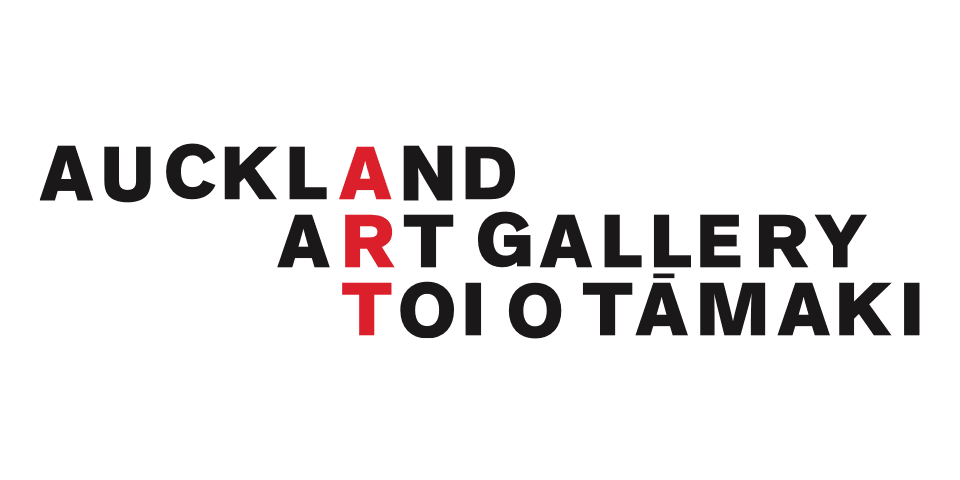A new show at Auckland Art Gallery Toi o Tāmaki marks the first major local presentation of work by epochal British artists Gilbert & George. Chloe Lane talks us through some of the exhibition’s highlights and looks back on their 50-year career.
“The Singing Sculpture” is the work that secured Gilbert & George’s place in the art history books. First performed in 1969, it was living proof that art could be anything – and that “anything” could be highly creepy. The metallic face paint and doll-like dance movements that support Gilbert & George’s quivering rendition of the nostalgic ditty “Underneath the Arches” is the stuff of particularly strange nightmares.
Who are these men decked out in tweed? A 1971 New Yorker “The Talk of the Town” column from around the time of the first US performance of this work states: “Their dealer insists they are not putting anybody on.” In 2022 the nature of Gilbert & George – two men, one artist – and the sincerity of their output is unquestionable. And yet there remains a remarkable tension between the serious, political, controversial and even horrifying content of their work, and its eerie and sometimes even comedic execution.
Gilbert & George: The Tāmaki Makaurau Auckland Exhibition 2022 at Auckland Art Gallery Toi o Tāmaki is the first major New Zealand presentation of Gilbert & George’s work. Since the 1970s they have made monumentally large-scaled “pictures” that montage photographs with self-portraits. This exhibition includes 61 of these pictures, covering six groups that span the period 2008–2020: Beard Pictures (2016), Jack Freak Pictures (2008), Scapegoating Pictures (2013), London Pictures (2011), Utopian Pictures (2014), and New Normal Pictures (2020).
The exhibition isn’t organised chronologically or thematically. Rather, it operates as a journey through Gilbert & George’s 21st century – if you can say that the little metal ball in a pinball machine is on a journey. No, it’s not a quiet, gentle, easygoing experience. Quiet and easygoing isn’t how Gilbert & George have, even after fifty years, maintained such a fierce grip on their confrontational edge, and their relevance.
As artists, Gilbert & George are documentarians first. The London Pictures use the headline posters (literally – they nicked the posters from outside local newsagents) made to sell newspapers to present a “moral portrait” of London and its inhabitants. In “Knife Straight” (2011) the 27 posters that make up the picture are presented in their original black and white. Except for the word knife, which in each headline is bright, blood red. Gilbert & George loom behind the text, only their heads flesh-coloured, their bodies, naturally tweed-suited, dissolving into a background of florals that have the quality of the limp mesh curtains hanging in your grandparents’ house. Creepy factor: still pretty high. Gilbert & George’s expressions are maybe the eeriest aspect of this work, hovering somewhere between concerned, ambivalent, accusatory – it’s hard to nail them down.
There is visual tension in all of Gilbert & George’s pictures. Considering the old “painting” stuff of colour, line and composition, these are the works of masterful practitioners. “Beardwise” (2016) from Beard Pictures presents Gilbert & George in a saturated red, donning feathery beards made of montages of golden leaves, their expressions blank, even possessed. Their heads are sandwiched between fencing and barbed wire, and hemmed in from all sides by floating cameos of tarnished silver. The colour palette in other pictures from this series is similarly limited and sickly: sharp purples, mint greens and bright oranges feature heavily. Many of the works also have Gilbert & George drawn with darkened, sunken eyes. It is unnerving – they appear vampiric.
A 2017 opera titled The Naked Shit Songs by Dutch composer Huba de Graaff reconstructs a 1996 Gilbert & George interview. An excerpt from the libretto has the interviewer asking the pair, “What’s so scary about life?”
“It’s a terror,” Gilbert & George reply. “It’s a terror.”
“What’s a terror?”
“Everything.”
It’s difficult to ignore this sentiment. Everything is terrifying in the Jack Freak Pictures, which take the blue, red, and white of the Union Jack and hack it to bits. “Britishism” (2008) has the graphically busy and exciting quality of a death metal album cover. And the Union Jack here has been separated, shattered, and rotated so that if it still operates within the language of flags it is only because these new shapes have an echo of swastikas or anarchy symbols. The figures of Gilbert & George in this picture are blue and red. They are small and multiplied in such a way that their miniatures look like rows of teeth revealed by a mouth that is, what – yawning? Crying? Screaming? We’re getting beyond creepy here.
The Scapegoating Pictures present monochromes of Gilbert & George’s East London streets. The hard asphalt and metal of the scenes are softened by the fuzzy lines of spray paint that both reveal and reduce the flesh-tone figures of Gilbert & George. In these works they shimmer, and occasionally dance, while being rained down on by nitrous oxide canisters. “NCP” (2013) has them trapped inside a matrix of metal scaffolding. Their bodies are revealed only through floating Microsoft Paint-like lassos. Around them fly similarly shaped windows (vortexes, holes?) revealing another background in their favourite blood-red. They are dancing in this picture, but reluctantly – as if someone off-screen might be pointing a gun at them.
None of the figures in the New Normal Pictures of 2020 are dancing. Instead Gilbert & George appear as if they are being buffeted by invisible, menacing forces. On those same East London streets, they are struggling to remain standing, and in some pictures they have even failed, collapsing in the likes of a bus shelter. “Bag Day” (2020) has them decked out in pressed red suits, plonked down on what look like the blank bases for a couple of torn-down statues. Crumpled plastic zip-lock bags hover in front of a nuclear sunset. A pair of skinny looking dogs look left and right, as Gilbert & George look skywards. What do they hope to find up there? Except for the dogs, the unsettling factor here is low. The tone is more of devastation, exhaustion, maybe disbelief? Whichever, it hurts a bit to look at.
Gilbert & George, who married in 2008, will readily sing the praises of Margaret Thatcher, and it’s not hard to find texts on their interest in skinheads. Their word on those blank bases and the recent toppling of colonial statues: “Shameful.” They have spent decades making pictures that are intentionally, unforgivably confrontational, which say exactly what the artist wants to say. They have also used that time to construct an aura around themselves, as provocateurs. They will tell you, “We want our art to bring out the bigot from inside the liberal and conversely to bring out the liberal from inside the bigot.” One reason it might be so hard to pin down what the Gilbert & George figures in their pictures are thinking is because this is where they operate best: a monumental grey area of sentiment and intent. You’re meant to feel uncomfortable and to have questions – about them, and for yourself. But are Gilbert & George, their figures always front and centre, just as they were in that earliest, creepiest sculpture, the heroes or anti-heroes? Can’t they be both?


